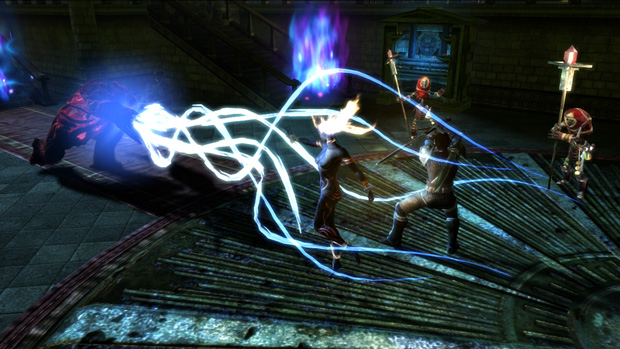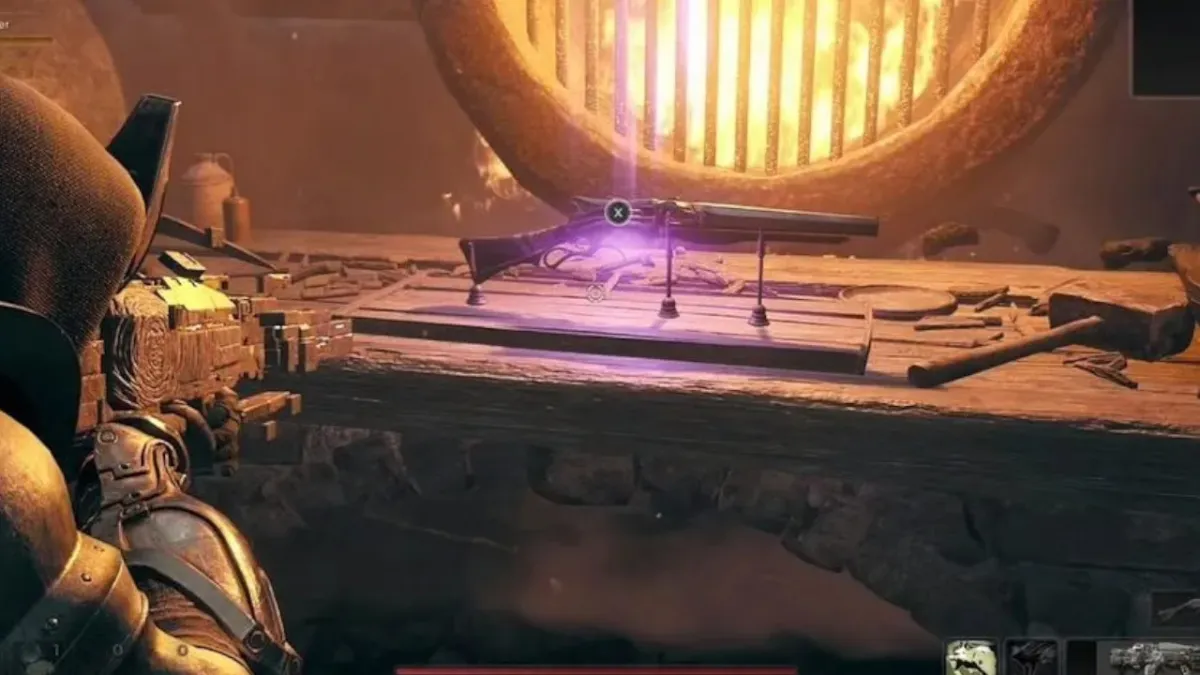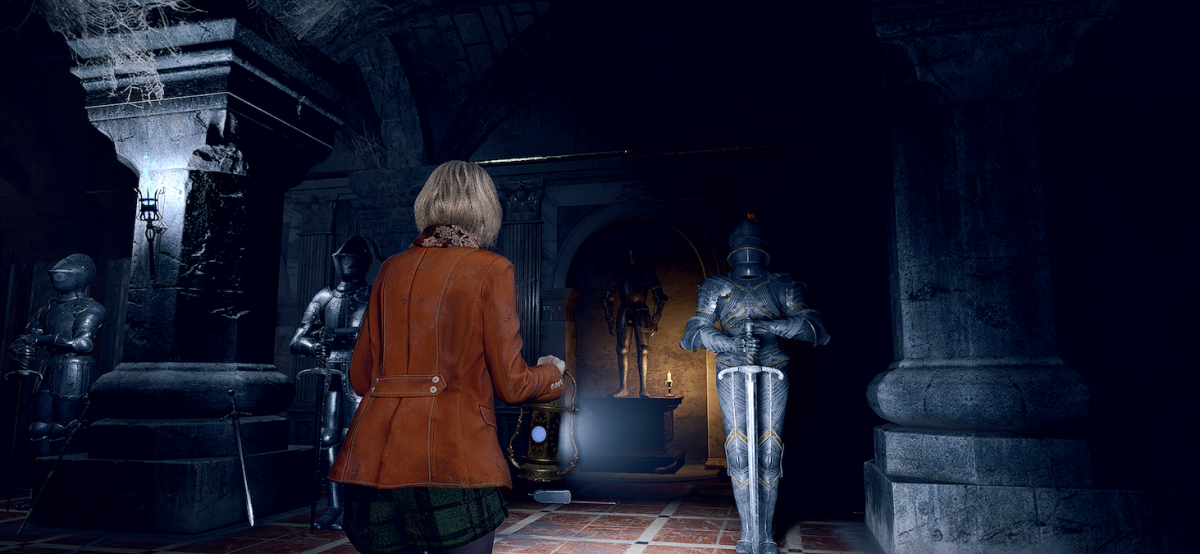Following Dungeon Siege II and Uwe Boll’s film adaptation — or showcase of why Ray Liotta should be an evil mage in every movie — the Siege franchise has been dead for years with the exception of the forgettable Space Siege.
Now, almost six years after the last installment, Obsidian Entertainment is getting ready to release their version of the semi-classic hack and slash game on both PC and consoles. In the process, they have changed things to fit the modern age. And boy, have they changed a lot.

For starters, the game now has an actual story with dialogue choices. The first two games did have a story, technically, but you’re excused if you don’t recall any of it during the long trek through mobs of enemies from area to area.
While this is an Obsidian game, Dungeon Siege III does not get into Alpha Protocol or Fallout: New Vegas levels of reactivity with the story progression. But if you can imagine a Mass Effect 2-type of conversation interface with similar repercussions for progression, influence gains with characters, and awards, you’ll have a good idea of what to expect. The previous games provided enough lore for Obsidian to build upon with its trademark storytelling, and given that my play session would’ve taken about a third longer if I hadn’t skipped through most of the dialogue while reading the subtitles, there seems to be plenty of it.
Suffice to say there is a 20 hour story to play through which changes depending on both the choices you make, and which of the four available characters you choose at the start of the game. Although a game this size will likely feature a lot of similar levels and dungeons from any of the character’s perspective, some of the dialogue already hinted at different options and approaches for different characters. If you want to see all of it, there seems to be plenty of bang for your buck on that front.

Still, this is Dungeon Siege we are talking about and no matter how good the story may be, you’re not going to see much of it if the gameplay doesn’t make you want to keep on playing. While Obsidian said that changes from the first to the second game were pretty big, and changes from Dungeon Siege II to Dungeon Siege III should be viewed from the same perspective, it doesn’t hide the fact that this game plays more like Baldur’s Gate: Dark Alliance than anything else.
In a nutshell, you run around with up to four players mashing buttons through enemies. Which is pretty great if you were a fan of Dark Alliance. The game supports two player local co-op and up to four player online, or a mix of that — so if have four friends and only two copies of the game: you’re in luck.
Of course just mashing the same buttons gets tiresome after an hour, unless you’re Jim Sterling, which is why a deep yet accessible combat system comes in handy. Every character has an offensive, defensive and ‘second’ stance which each have three abilities — mapped to the X, Y and B buttons on a 360 controller — to unlock and level.
Offensive is your basic stance where you alternate between standard, heavy and area-of-effect types of attacks. By holding the block button, you can either block while standing still until your ‘focus’ (mana) bar runs out — which does not stun you when it runs out — dodge, and use defensive abilities like healing or buffs while in this defensive stance.
The second stance is where things get interesting. Of the two of the characters available in the build on site, the melee character could switch to a sword and shield stance for increased defense while the ranged character could switch to a spirit form for casting fire bolts and area of attack flame sea spells.

A new leveling system thankfully saves you from the tiresome grind of low level nature and combat magic skills in the previous games. Every time you level up, you can choose to use one point to unlock a new ability or put it into leveling up one of nine abilities (three for every stance) you already unlocked before.
You can also use one separate point to unlock or level up ten talents, which are passive abilities for things like increased healing, damage, etc. A remnant of the old Dungeon Siege leveling system is still in place for ability mastery. Using an ability enough will unlock a power version of that ability. For example, the power version of the fire area-of-attack ability also stuns enemies, keeping them stuck inside the damage zone.
Power versions don’t come cheap though, as they cost you a power orb. You gain a power orb by continuously dealing damage and filling a reticule, which fills up quickly enough for the abilities to remain useful, but slow enough that you still have to use them wisely during boss encounters.
Putting all of these elements together, it gives you plenty of freedom to either keep mashing buttons in different stances if you like, or to take a more tactical approach by following up specific attacks for maximum damage. Not to mention combining the abilities of four different characters at once.

Dungeon Siege III has a drop-in/drop-out co-op system which should make it rather painless to join games or set up a session. Characters and loot are confined to the host player’s profile however, so don’t expect to take your end-game character into another player’s starting areas. Obsidian wants players to experience the story-heavy campaign without those shenanigans, so this will be something you’ll just have to deal with.
However, it didn’t look like this would be as big a deal as people have previously made it out to be. You won’t be stuck with a possibly useless character build like in the previous games, and the core gameplay is engaging enough to not care as much about importing your own character and equipment.
Speaking of which, the inventory is shared between players and there are no health or mana potions in the game. You either heal yourself or team members, or build and equip your character for health regeneration or life drain attacks. Some items are character specific though, which saves you the pain of fighting over who gets which weapon. As your stats are defined by your equipment, you’ll probably be fine after buying gear or finding loot in another player’s game. Give it an hour, and you’ll have your own tailored character in a friend’s game.
The host also controls the camera, which adjusts to the action reasonably well. The camera pans out a little when two players move in different directions, although you can still get stuck at the edge of the screen if you play with another stubborn player. Luckily, if that player decides to take a break and becomes inactive for a number of seconds, the AI takes over and gives you the freedom to carry on.
Some of the game’s bosses, mini-bosses and uncommon enemies have special attacks and patterns which force you to coordinate your abilities as a team — probably moreso on higher difficulties — and not doing so wiped both me and my teammate as well as the Gametrailers chaps who were playing the game before us. If you’re not careful, you will die.

Co-op comes into play with dialogue choices as well, where other players can highlight their preferred selections while the host decides which to pick. As some characters will have a preference for certain types of choices throughout the game, you’ll also have to keep that in mind to gain influence with them and unlock ‘deeds’ after gaining enough influence. These deeds give you additional bonuses, so it’s worth progressively gaining their loyalty. Then again, they may have funny dialogue to share if you select a ‘bad’ dialogue option.
There are all kinds of tiny elements in Dungeon Siege III that show that Obsidian both knows the genre as well as what made Dark Alliance such a fun game to play cooperatively. The combat feels gratifying, you can’t dodge-roll faster than you can run(!), enemy animations provide feedback on when they will land a hit, and you regain full health and focus when you level up. Switching quests can be done from an overlay menu that doesn’t take you out of the game, and selecting a new quest shows a Fable-esque breadcrumb trail to the objective for only a few seconds.
All in all, any fan of Baldur’s Gate: Dark Alliance should keep an eye out for this game. But Obsidian hasn’t forgotten the old fans of the PC Dungeon Siege games either, and are still hard at work tweaking the mouse & keyboard controls to keep it from being a ‘consolized’ PC game. Chris Taylor’s Gas Powered Games has also provided feedback during the game’s production, and apparently approve of Obsidian’s approach for the third installment.
The Xbox 360 controls work well already, and the combination of the easy, yet deep combat system and multiple endings based on characters and choices should keep you playing Dungeon Siege III with friends for a long time. Unless, you know, the game ends up having game-breaking bugs or something.
Dungeon Siege III is slated for a May 31st release on PC, PlayStation 3 and Xbox 360.




